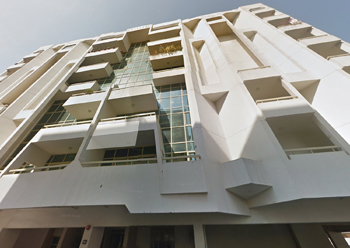Right retrofits hold key to green targets
Research on the region makes a compelling case for upgrading traditional cooling systems with progressive technologies like variable refrigerant flow (VRF), says TARIQ AL GHUSSEIN, CEO of Taqeef.
01 April 2020
Emirates Authority for Standardization and Metrology’s (ESMA) new standards for energy efficiency labelling for household and commercial air-conditioners are good news for responsible suppliers and manufactures throughout the region.
Released in early March, with a tentative implementation date of July 2020, these regulations will raise the bar by increasing the energy performance requirements for room air-conditioners (RAC) and central air-conditioning (CAC) systems.
RAC
While the more stringent values required will certainly result in some re-categorisation in the split units sector, it is good news for the most innovative manufacturers in the market whose product pipeline always exceeds the regulatory demands. General and Midea’s residential air-conditioners, for example, will continue to fall into the four- and five-star space due to new technological advancements – even with the new protocols. However, the increasing pressure to enhance efficiency levels will certainly pose a struggle for those brands that do not have the weight of technology and innovation behind them.
CAC
However, it is in the CAC sector where we’ll see the most significant impact from the regulatory changes, and in particular in relation to variable refrigerant flow (VRF). Why?
Legislation relating to building energy performance, HVAC (heating, ventilation and air-conditioning) system components and specifying HVAC efficiency in buildings is forcing us towards newer ways of thinking and managing our cooling footprint.
Here’s what we know:
• Over 50 per cent of the annual energy consumption of commercial buildings goes to HVAC;
• As much as 99 per cent of the time, commercial buildings operate at less than 80 per cent of full load;
• These more stringent regulations on building energy performance and HVAC system efficiency will force building owners to take measures to reduce their consumption; and
• Improving partial load efficiency in existing buildings presents them with significant and now measurable opportunities for savings.
VRF
EMSA’s new standards – using CSPF (cooling seasonal performance factor) – will, for the first time, specify part load efficiencies and provide parameters that are tailored to our climate. The introduction of CSPF by ISO 16538 is a big innovation as it will measure performance taking into account that full and partial load can be achieved at any temperature and analysing local weather bin data.
This means that the true benefits of VRF will now be more measurable. This could be the tipping point for this technology in the region.
We know retrofits will play a key role in reaching government targets for green buildings. Research from the Emirates Green Building Council indicates the measurable energy savings from retrofitted buildings are significant across sectors with best performers offering savings of 58, 61 and 35 per cent, for hotels, schools and malls, respectively. Taqeef’s own case study data supports that, demonstrating the significant savings of retrofitting using VRF.
Increasingly, we’re seeing more debate about building energy consumption and the contribution of the HVAC sector. This, alongside these new regulations, will no doubt accelerate the retrofit market.
However, an increase in auditing, awareness and education campaigns is essential. While the potential for savings and operational efficiencies through VRF retrofits is clear, there is still a reluctance to try this ‘new’ technology. Schools, malls and leisure venues are obvious targets and the audit research that exists in the region makes a very compelling case for upgrading traditional commercial cooling systems with more progressive and adaptable technology like VRF.
VRF case study
A case in point is The Palace, a 20-year-old residential tower with 42 apartments in Deira, Dubai. The developer Bu Haleeba was looking for a HVAC partner to refurbish the air-conditioning system as the existing air-cooled chillers were outdated and inefficient.
As the residents would remain in occupancy during the renovation, the developer needed a solution that would improve HVAC performance and efficiency with minimum disruption. Bu Haleeba also wanted an individually metered system installed so that Dubai Electricity and Water Authority (Dewa) bills would go directly to the residents.
Taqeef retrofitted the building, replacing three air cooled chillers and plant with a VRF system. To minimise costs and disruption, the upgrade was completed while the old chiller system was still operational.
The installation of multiple indoor fan coil units (FCUs) for each apartment – instead of the single indoor units used for the chiller system – provided more control flexibility, better efficiency and reduced the administrative burden on the landlord.
ESMA-accredited independent auditors concluded The Palace retrofit delivered a 66 per cent reduction in energy consumption within the first year, and savings of almost Dh400,000 ($109,000). The annual cost of chiller consumption of Dh595,065 fell to Dh202,657 under the VRF system.
- Towards sustainable systems in the region
- Emerson unveils new condensing units
- Right retrofits hold key to green targets
- Evaporative cooling strategies for the Gulf
- Indoor air not geared to tackle coronavirus
- Pegler registers solid growth in Mideast
- Emicool deploys energy-saving solution



